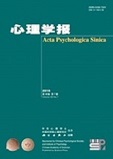Both attention and expectation are important mechanisms to help the brain filter and process information in a complex environment. However, there is still no unified conclusion about whether they act interactively or additively on perception. Previous studies that used the spatial cueing paradigm to address this issue might have confounded attention and expectation. Recently, researchers have made efforts to define attention and expectation orthogonally. Using ERP and fMRI techniques, they explored the relationship between endogenous attention and probabilistic expectation in a way that defining attention by task relevance and defining expectation by probability. In the present study, we explored the relationship between exogenous attention and probabilistic expectation, by making clear orthogonal definitions for them. Moreover, previous studies mainly considered the relationship between target expectation and attention. Considering the possible difference between expectation on a target and expectation on a distractor, we also focus on the influence of expected subject in the relationship between expectation and attention.
In the present study, double peripheral cuing combined with visual search paradigm were used to explore the relationship between expectation and attention. We defined attention using peripheral cues without probabilistic information. Attended was defined when a peripheral cue was consistent with the location of the target, and unattended was defined when the peripheral cue was inconsistent with the location of the target. Expectations were defined by using spatial probabilities, and the participants were told beforehand where the stimulus would be more likely to occur through instruction. Four experiments were carried out in this study, and each experiment included 24 valid participants. Before the formal experiment, the participants were told which locations the target would appear more frequently (the distractor was randomly presented) or which locations the distractor will appear more frequently (the target was randomly presented). In a formal trial, the participants were presented with a 500 ms fixation point first, and then there were 50 ms double-cues without any validity probability. After the double-cues disappeared for 150 ms, a target array (consisted of a target and a distractor) appeared for 1000 ms. Participants were asked to find the target and to perform a discrimination task by pressing corresponding keys.
In experiment 1, the double-cues were presented randomly in the left or right visual field, such that attention was manipulated in left or right visual field. In contrast, the participants were expected the targets or distractors to occur more in the upper or lower visual field, that is, expectation was manipulated in the upper or lower visual filed, orthogonal to the manipulation of attention. In Experiment 1, we found that when the expected subject is different (on the target or on the distractor), the relationship between expectation and attention was different. When the target is the expected, expectation and attention influenced performance in an interactive way. However, when the distractor is the expected, they influenced performance in an additive way. In experiment 2, the double-cues were randomly presented in the upper or lower visual field, while the participants were expected the targets or distractors to occur more frequently in the left or right visual field. Contrary to our prediction, under this manipulation of attention, the main effect of attention was not significant. We suspected that this was due to the presence of attention cues across the left and right visual field. Therefore, we improved Experiment 3 by presenting the attention cues with diagonal locations centered on the fixation point, and manipulating the expectation on the orthogonal diagonal location to the attention cues. We replicated the basic findings of Experiment 1 in Experiment 3, that is, when the target was expected, expectation and attention interactively influenced performance. However, when the distractor was expected, expectation and attention influenced performance separately. Furthermore, in order to explore whether task difficulty affects the relationship between expectation and attention, we increased the number of stimuli in Experiment 4. Again, we found that when the target was expected, expectation and attention were interacted in Experiment 4. Moreover, by comparing with Experiment 1, we found that the relationship between expectation and attention did not change as a function of task difficulty.
Our results suggested that when the expected subject is different (on the target or on the distractor), the relationship between expectation and attention was different. Previous studies have suggested that in the process of visual search, the promotion of the target and the inhibition of the distractor are controlled by two different neural mechanisms. Therefore, the relationship between expectation and attention is different when target is the expected subject relative to when distractor is the expected subject.When the target is expected, the interaction between expectation and attention on performance can be explained by predictive coding theory. Under the expected condition, the prediction error is small and there is no need to update the prediction model in the brain, so the efficiency of attention is higher. Under unexpected conditions, the prediction model needs to be updated, which leads to relatively low efficiency of attention. When the distractor is expected, expectation and attention affect performance additively, which may be due to the low correlation between the distractor expectation and the target task, or the processing of the distractor and the target are completed by different neural mechanisms. In conclusion, we believe that when expectation is anchored to different subjects, the relationship between expectation and attention are different. Specifically, when expectation is anchored to the distractor, they influence performance independently, and when expectation is anchored to the target, they are influence performance interactively.




